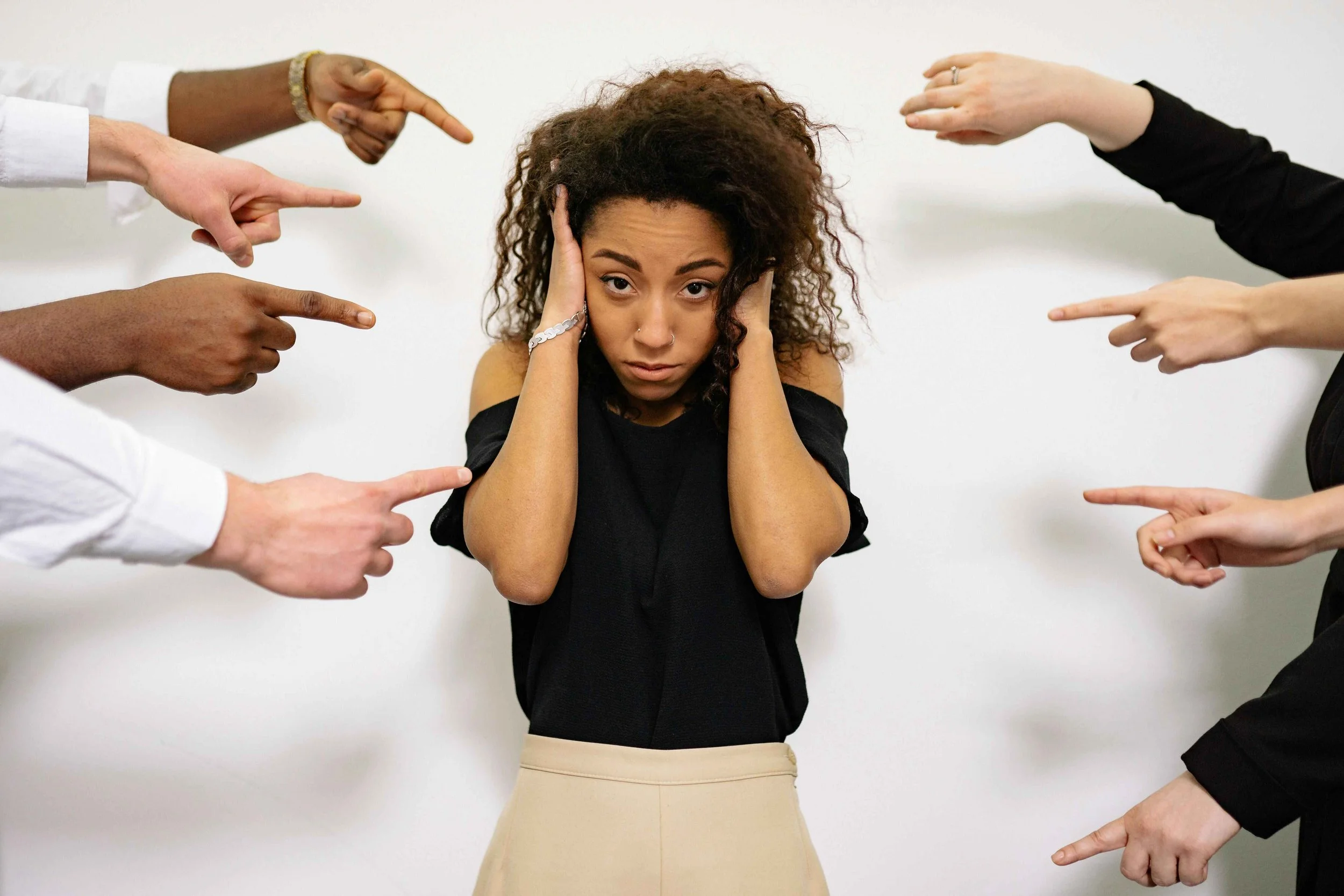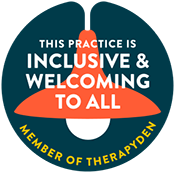Social anxiety can be an overwhelming and isolating experience, causing individuals to avoid situations that may trigger feelings of nervousness, embarrassment, or self-consciousness. Fortunately, one of the most effective treatments for social anxiety is exposure therapy. This therapeutic approach involves gradually and systematically exposing yourself to social situations in a controlled and supportive environment, helping you confront your fears without avoidance. Over time, this process helps to reduce anxiety, build confidence, and challenge the negative thought patterns that fuel social fears.
Exposure therapy works by allowing individuals to face their anxieties step by step, starting with less intimidating situations and slowly progressing to more challenging scenarios. This gradual exposure helps desensitize the individual to the feared stimuli, ultimately allowing them to experience social interactions without feeling overwhelmed. By practicing in real-world contexts, individuals can reframe their perceptions of social situations and learn that their fears are often exaggerated. Through consistent exposure and the guidance of a trained social anxiety therapist at Anchor Therapy, individuals with social anxiety can build the tools needed to navigate social environments with greater ease and comfort.
Anchor Therapy is a counseling center in Hoboken, NJ with mental health therapists specialized in helping children, teens, adults, couples, and families with anxiety, depression, relationship issues, trauma, life transitions, and more. Anchor Therapy is accepting new clients and is now providing in-person sessions and teletherapy sessions to residents of New Jersey, New York, and Florida.
What is social anxiety?
Social anxiety is a psychological condition characterized by an intense fear or discomfort in social situations, often due to a fear of being judged, embarrassed, or criticized by others. Research shows that approximately 15 million adults in the United States have Social Anxiety Disorder. People with social anxiety may experience overwhelming worry about being the center of attention, making mistakes in public, or being negatively evaluated. These fears can make everyday interactions, such as speaking in meetings, attending social events, or even making eye contact, feel daunting.
This anxiety can lead to avoidance behaviors, where individuals steer clear of social interactions altogether or endure them with significant distress. The physical symptoms of social anxiety can include sweating, trembling, a racing heart, and even nausea, making social situations not only mentally challenging but physically uncomfortable as well. Check out our blog “3 Ways to Manage Your Physical Anxiety Symptoms.”
Over time, untreated social anxiety can interfere with personal relationships, work, and overall quality of life, but it is important to note that with the right treatment, such as therapy or medication, social anxiety can be effectively managed.
What are the common signs of social anxiety?
Avoidance of social situations
Intense fear of judgment or embarrassment
Physical symptoms
Difficulty speaking or making eye contact
Overthinking interactions
Extreme self-consciousness
Low self-esteem (Read our blog “Do You Understand Your Self-Esteem?”)
Fear of performing or speaking in public (Check out our blog “How Do I Overcome The Fear of Public Speaking?”)
What is the root cause of social anxiety?
The root cause of social anxiety is typically a combination of genetic, environmental, and psychological factors. While the exact cause can vary from person to person, here are some common causes of social anxiety:
Genetics:
There is often a hereditary component to social anxiety. If someone has a family history of anxiety disorders or mental health conditions, they may be more likely to develop social anxiety themselves. Certain genetic traits can make individuals more susceptible to stress and anxiety in social situations.
Negative early experiences:
Childhood experiences, such as bullying, teasing, or negative social interactions, can contribute to the development of social anxiety. Experiencing rejection or criticism at a young age can create lasting fears of being judged or humiliated in social settings. Read our blog “How Childhood Trauma Can Impact You As An Adult.”
Parenting style:
Overprotective or overly critical parenting can also play a role in the development of social anxiety. Children raised in an environment where they are excessively shielded from social challenges or harshly criticized may develop a heightened sense of fear or insecurity when it comes to social interactions.
Environmental influences:
Cultural, societal, or peer pressure can exacerbate social anxiety. Living in environments where there is a strong emphasis on appearance, success, or social comparison can make individuals more self-conscious and anxious in social settings.
Biological factors:
Imbalances in brain chemicals, such as serotonin or dopamine, may also contribute to anxiety disorders. Neurobiological factors, including how the brain processes fear and anxiety can increase the likelihood of developing social anxiety.
Cognitive patterns:
People with social anxiety often have distorted or negative thought patterns. They may overestimate the likelihood of negative outcomes, catastrophize social situations, or believe that they will be judged harshly by others. These cognitive patterns can reinforce and perpetuate anxiety.
In many cases, social anxiety is the result of a complex interaction between these factors rather than a single cause. Understanding these contributing factors can be important in addressing and managing the disorder effectively.
Does social anxiety go away with exposure?
Yes, exposure to feared social situations can help reduce social anxiety over time, but it does not necessarily "go away" on its own without effort or support. Exposure therapy is a common treatment for social anxiety, and it works by gradually and systematically exposing individuals to situations that trigger their anxiety in a controlled way. This approach helps desensitize the person to these situations, reducing the anxiety response over time. However, there are a few important points to keep in mind:
Gradual Exposure:
Exposure therapy typically starts with less anxiety-provoking situations and gradually progresses to more challenging ones. This step-by-step approach allows the individual to build confidence and reduce fear in a manageable way, rather than overwhelming them.
Repetition and Practice:
Just like any skill, reducing social anxiety takes consistent practice. Repeated exposure helps retrain the brain to recognize that social situations are not as dangerous or threatening as the anxiety leads a person to believe.
Cognitive Restructuring:
Exposure therapy often goes hand-in-hand with Cognitive Behavioral Therapy (CBT) which helps individuals change negative thought patterns. For example, someone with social anxiety might believe they will be ridiculed in a conversation but, through exposure and cognitive work, they learn that the worst-case scenario is unlikely to happen and that their fears are often exaggerated. Check out our blog “How You Can Treat Your Anxiety Using CBT.”
Individual Differences:
The effectiveness of exposure therapy can vary from person to person. While many individuals experience significant relief from social anxiety through exposure, others may need additional support or therapies, such as medication or deep cognitive work, to address the underlying fears.
Long-Term Management:
Exposure therapy can lead to lasting improvements in social anxiety but, like other anxiety disorders, it is important to continue practicing coping strategies and seeking support when needed. It is not uncommon for some anxiety to resurface in stressful situations but, with the tools learned in therapy, it becomes easier to manage.
In short, while exposure therapy can be highly effective at reducing the intensity of social anxiety, it often requires time, effort, and ongoing practice. It can be a powerful tool for managing and, in many cases, overcoming social anxiety in the long run!
How long does it take for exposure therapy to work for social anxiety?
The length of time it takes for exposure therapy to work for social anxiety can vary significantly from person to person. Several factors influence the effectiveness and speed of progress, such as the severity of the anxiety, the individual's commitment to the process, and whether they are combining exposure therapy with other treatments like CBT or medication.
That being said, here are some general guidelines for exposure therapy’s timeline:
Initial Progress (First Few Weeks to a Few Months):
In the early stages of exposure therapy, individuals may start to notice some reductions in anxiety and a sense of accomplishment after facing feared situations, even if the anxiety is not completely gone. The first few weeks often involve easing into less intimidating situations and learning how to manage anxiety in real time.
Moderate Improvement (1 to 3 Months):
As the exposure therapy continues, many individuals begin to experience more significant improvement in how they handle social situations. The key is gradual exposure- starting small and working up to more difficult social interactions. By this point, individuals may find that situations that previously triggered intense anxiety are becoming more manageable.
Long-Term Results (3 to 6 Months or More):
For many people, significant, lasting improvements in social anxiety are often seen after several months of consistent exposure practice. By this stage, individuals may be able to navigate many social situations with much less anxiety though some people may need to continue practicing and fine-tuning their coping strategies to maintain these gains.
Ongoing Practice:
Even after improvement, social anxiety can sometimes resurface in new or high-stress situations. Therefore, many individuals continue to use the skills learned in exposure therapy over the long term to maintain progress.
The severity of the anxiety, your consistency and effort, and the kind of support you receive from your social anxiety counselor can all influence your therapeutic duration.
Overall, many individuals begin to see some improvement in a few weeks, but the full benefits of exposure therapy often emerge over a period of several months with ongoing practice and support. It is important to remember that progress can vary, and the key is to remain patient and consistent.
When is exposure therapy for social anxiety not recommended?
Exposure therapy for social anxiety is an effective treatment for many individuals, but there are certain situations where it may not be the best approach or should be used with caution. Here are some scenarios in which exposure therapy might not be recommended or needs to be adjusted:
Severe or Uncontrolled Mental Health Issues:
If an individual has other mental health conditions, such as severe depression, psychosis, or other anxiety disorders (e.g., panic disorder), exposure therapy may not be the best first-line treatment until those issues are stabilized. It is important to address underlying conditions before beginning exposure therapy to ensure it doesn’t exacerbate other symptoms.
Lack of Readiness:
Exposure therapy requires active participation and a willingness to confront anxiety-provoking situations. If someone is not ready or motivated to engage in the process, it might not be effective or could lead to increased distress. In such cases, a therapist may recommend preliminary work, such as cognitive restructuring or relaxation techniques, before starting exposure exercises.
Extreme Distress During Exposure:
If an individual experiences extreme distress or a sense of being overwhelmed during exposure exercises, this might signal that the pace of exposure is too rapid. In such cases, the exposure exercises should be modified to be less intense or more gradual. Starting exposure too soon or too intensely can worsen anxiety or cause emotional harm, so therapists typically use a paced approach to avoid triggering a panic response.
Severe Avoidance or Trauma History:
If social anxiety is linked to a history of trauma or abuse, exposure therapy may need to be adjusted or supplemented with other therapeutic approaches, such as trauma-focused therapy or Eye Movement Desensitization and Reprocessing (EMDR). In cases where trauma is present, exposure therapy without addressing the trauma may lead to re-traumatization or worsening symptoms.
In summary, while exposure therapy can be highly effective for many people with social anxiety, it is important to consider individual circumstances and needs. If any of these concerns apply, it is crucial to work closely with a mental health professional to determine the most appropriate treatment plan which may include addressing underlying conditions or beginning with other therapeutic approaches.
Working with an exposure therapist for social anxiety in Hoboken
Working with an exposure therapist in Hoboken for social anxiety involves gradually confronting the situations that trigger anxiety in a safe, controlled manner. Exposure therapy focuses on desensitizing the individual to social fears by starting with less intimidating situations and slowly progressing to more challenging ones. The therapist works closely with the client to identify specific social situations that cause distress, such as speaking in front of others or attending parties, and then develops a plan to expose the person to these scenarios step by step. Over time, this process helps reduce the fear response, allowing the individual to engage with social situations without feeling overwhelmed.
Throughout the therapy, the social anxiety therapist also addresses the negative thought patterns that contribute to social anxiety, using cognitive restructuring techniques to help the client reframe their beliefs about being judged or rejected. Additionally, your mental health counselor may teach relaxation strategies like deep breathing or mindfulness to manage physical symptoms of anxiety. While progress can vary from person to person, consistent exposure combined with support from the therapist can lead to lasting improvements, helping individuals with social anxiety build confidence and navigate social interactions with greater ease.
What are the benefits of exposure therapy for social anxiety?
Improves confidence (Read our blog “The Ultimate Guide to Building Self-Confidence”)
Reduces fear and anxiety
Lessens avoidance behaviors
Improves social functioning
Challenges negative thoughts
Promotes long-term growth
Enhances one’s quality of life
Exposure therapy is a proven and effective approach for managing social anxiety, helping you gradually confront your fears and build the confidence to engage in social situations. While the process may take time and effort, the long-term benefits- reduced anxiety, improved social functioning, and greater overall well-being- are well worth it.
Victoria Scala
is the Social Media Manager, Intake Coordinator, and Community Engagement Director at Anchor Therapy in Hoboken, New Jersey. She is a graduate of the Honors College of Rutgers University-Newark and is currently studying Clinical Mental Health Counseling at the graduate level. In her roles, Victoria is committed to managing the office’s social media/community presence and prioritizing clients' needs.
IF YOU’RE LOOKING FOR HELP FROM A PROFESSIONAL COUNSELOR TO ASSIST YOU IN MAKING POSITIVE CHANGES IN YOUR LIFE, CONTACT US
WORKING WITH US IS EASY
Fill out the contact form below.
Our intake coordinator will get back to you with more information on how we can help and to schedule an appointment. We will set you up with an experienced licensed therapist who specializes in what you're seeking help with and who understands your needs.
You’ll rest easy tonight knowing you made the first step to improve your life.



















